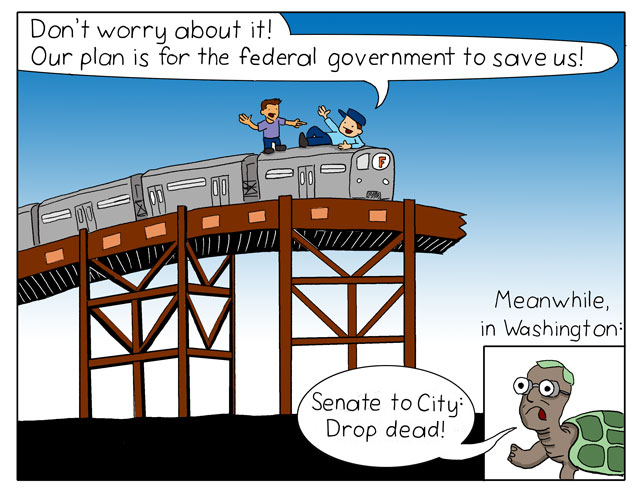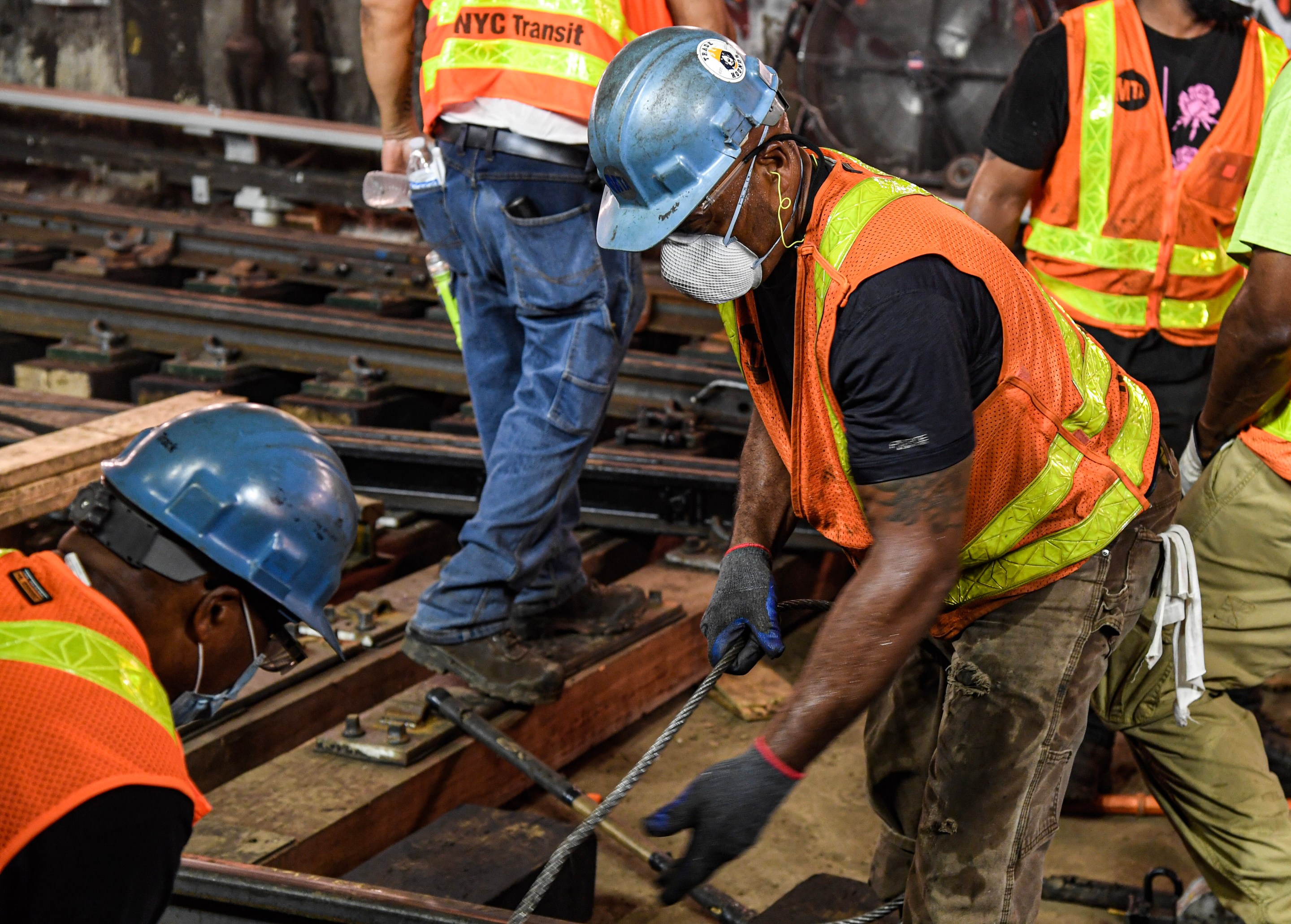The Metropolitan Transportation Administration faces an unprecedented shortfall of fares and revenues, forecasting a deficit of $16 billion through 2024. But this problem will only compound a long list of preexisting operational problems: Trains are slower than they could be, the system is vulnerable to delays and, above all, the agency spends far more on day-to-day operations than it should.
Fixing these problems when money for capital improvements is scarce will require some creative thinking, including taking inspiration from subway systems overseas. Following are five cheap steps that could improve MTA service quickly, yielding faster, more reliable trains for lower costs:
Use nightly shutdowns to keep maintenance costs down: In early May, the city's 24-hour subway service began nightly shutdowns for deep cleaning of subway cars to prevent the spread of COVID-19. Although the necessity of deep cleaning is dubious (the virus does not spread easily on surfaces), nightly shutdowns provide an opportunity to do something much more valuable: get maintenance costs under control. The MTA spends four times as much on maintenance per mile of track than does any other subway system in the nation besides PATH. One big reason: Around-the-clock service forces workers to coordinate track maintenance around train schedules. This means that trains constantly interrupt work, and that maintenance crews have to employ large numbers of “flaggers” — who do no work besides standing at the edges of work sites to signal passing trains to slow down. More efficient track maintenance could save the MTA more than $1 billion a year. Rescheduling maintenance work is hardly new: Most world subway systems close at night for maintenance work, including many with far more riders than New York’s.
Employ platform screen doors: The MTA has studied installing platform screen doors in subway stations — that is, Plexiglas partitions that separate the tracks from platforms, protecting passengers from falling onto the tracks, and have embedded doors that open when trains pull in. The agency rejected the idea on cost grounds, especially because the weight of the doors would require extensive station retrofits. But new, lightweight “rope" screen doors — essentially curtains of taut, horizontal ropes that can be raised when a train pulls in — would not have these difficulties. They've been installed in many subway systems in Korea and Japan.
Re-evaluate speed restrictions: NYC Transit often has lowered speed limits in response to subway accidents instead of addressing the underlying causes, and some speed restrictions could be reexamined — which began under Andy Byford’s Save Safe Seconds initiative. Subway schedules also assume that the trains have weak braking performance; more aggressive assumptions might save time without compromising safety.

'De-Interlining': Redrawing the service map would eliminate delay-prone “reverse branches,” where trains that run on different tracks in Manhattan combine onto the same line in other boroughs. For instance, DeKalb Avenue station has a complex junction that recombines the B, D, N, and Q lines. In Manhattan, the B and D lines run together under Sixth Avenue, and the N and Q run together under Broadway. But in Brooklyn, the D and N share tracks under Fourth Avenue, as do the B and Q under Flatbush. Recombining four busy lines is complex and often requires holding up some trains in order to let others pass, as any regular traveler between Manhattan and Brooklyn knows. Moreover, because the subway is so interconnected, delays on one line can cascade into the rest of the system. Getting rid of this recombination, by sending the B and D trains down one line in Brooklyn and the N and Q down the other, could reduce systemwide delays greatly. Other subway junctions could be simplified similarly. Such “de-interlining” has been a long-term goal of subway planners in other cities, such as London.
Improve passenger flow in stations: Many subway stations have narrow platforms and staircases more appropriate to a system with much lower ridership. Platform crowding is hazardous for passengers and creates a risk of falling onto the tracks. Overcrowding also generates in-station congestion that adds time to riders’ door-to-door journeys and reduces the capacity of the system. Conditions on platforms, however, could be improved without heavy construction, for example, by removing non-necessities such as newsstands; reevaluating the placement of benches, electronic displays, and other impediments, and reopening some closed entrances.
None of these ideas is radical; they all have precedents elsewhere. But they would require some creativity and openness to ideas from elsewhere — which MTA managers and New York politicians, accustomed to thinking that New York is so special that it has nothing to learn from others, often have been reluctant to embrace. If the past few months have taught us anything, it’s that we can’t expect to continue old habits forever. Given the MTA’s financial situation, there’s not much time to waste.
Connor Harris (@cmhrrs), a policy analyst at the Manhattan Institute, wrote the recent report “Five Cheap Ways to Improve NYC Subway Operations,” from which this article is adapted. The opinions of the Manhattan Institute do not necessarily reflect those of Streetsblog's editorial board.







